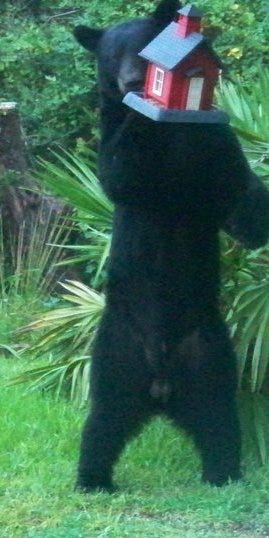
The Florida Fish and Wildlife Conservation Commission (FWC) announced today updated estimates of the Florida black bear population. These initial numbers are now available for two of the FWC’s Bear Management Units (BMUs) and result from the statewide study occurring during 2014 – 2015.
“This is the most ambitious, extensive and scientifically rigorous bear population survey ever undertaken in Florida,” said Nick Wiley, FWC Executive Director. “This survey work involves a number of partners representing public and private lands; we are grateful for their continued support for effective monitoring and management of Florida’s black bear population.”
In the North BMU, the study shows the black bear population estimate is more than 500 bears, more than double the estimate from 2002. In the Central BMU, the population estimate is more than 1,200 bears, an increase of nearly 30 percent over the previous estimate.
“These results confirm other information indicating a bear population increase and further verify that not only is the black bear a conservation success story in Florida, but it is time to adjust our management efforts,” Wiley said. “With bear populations rebounding so strong, we must continue the transition from a protection focus to a management focus to ensure bears continue to thrive in Florida.”
The new data for these two BMUs will be used to inform all aspects of the FWC’s comprehensive bear management program, including the refinement of harvest objectives for the proposed fall hunt. Updated population information for three additional BMUs is expected next year and will be used to guide management efforts in subsequent years.
This study is a collaborative effort among accomplished professionals in the wildlife management field. FWC wildlife biologists and technicians are conducting the field work, and a private laboratory, Wildlife Genetics International in British Columbia, is conducting the genetic assessments. Dr. Joseph D. Clark, a research ecologist affiliated with of the U.S. Geological Survey at the University of Tennessee, is directing the study and reported these first results. Key partners include the Florida Forest Service, Department of Environmental Protection State Parks, St. Johns River Water Management District, U.S. Forest Service, city of Port Orange, University of Florida Ordway-Swisher Biological Station, Volusia County and several private landowners who provided access to properties to conduct the work.
This article originally appeared on Santa Rosa Press Gazette: FWC data show increase in bear population
